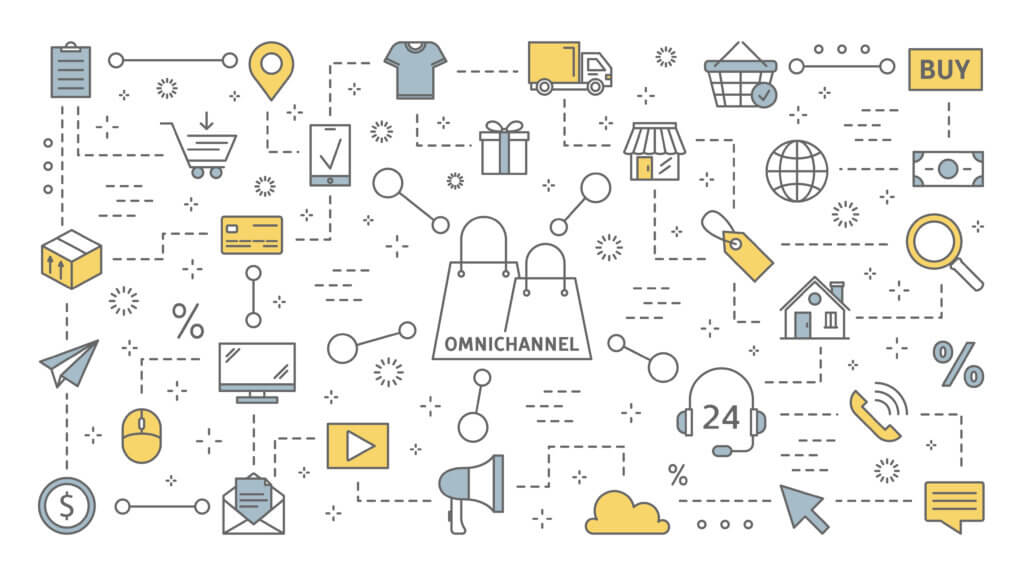Key to Success in Omni-Channel Migration: Part 2 – Preparing the Tactical Foundation for an Omni-Channel Migration
Migrating to a new Omni-Channel platform, whether cloud based or not, is a critically important business initiative for many companies that are seeking to advance their customer experience and improve competitiveness in an increasingly challenging business environment. But if the company is not well prepared with comprehensive strategic and tactical foundations, we often find that these initiatives can spiral out of control, increasing cost and negatively impacting numerous aspects of the business.
To avoid the pitfall of inadequate preparation, we strongly recommend investing the time and energy into strategic executive alignment and tactical foundational preparation. Both of these priorities need to be pursued in tandem to produce optimal results and to ensure the migration’s success.

We described the elements necessary for strategic executive alignment in our previous blog post, “Key to Success in Omni-Channel Migration: Part 1 – Driving Strategic Executive Alignment.” In addition, you will need to focus on these tactical foundational elements, as they are especially important parts of successful omni-channel implementations:
1. Data and Integrations
While omni-channel platforms consolidate previously disparate platforms, they are also still highly reliant on integrations with other systems. For instance, for single sign-on, companies will want to integrate with their HRIS system, typically via Active Directory. Companies will also want to integrate with systems of engagement or record such as CRM applications for screen pops and process efficiencies. Recent regulations require robust e911 solutions which are typically not native to omni-channel platforms. Many omni-channel platforms often don’t natively include robust Workforce Engagement Management or Natural Language Understanding and Processing solutions with best-in-class functionality, so integrations with 3rd party solutions are often necessary. And as a final example, many interaction designs will rely heavily on data from a company’s internal data infrastructure. These are a few examples of systems that need real-time integrations, and companies must ensure that all solutions in the proposed ecosystem are equipped with modern APIs.
2. Legacy System Clean Up
Foundational data integrity is a perpetual challenge, but if done reasonably well, can make omni-channel implementations infinitely easier. Some examples of data relevant to channel platforms include naming conventions, employees and organizational hierarchies and business unit structures, extension/DID assignments, organization of sites and locations, inventories of physical devices such as phones and fax machines, catalogs of voice prompts, on-hold promotional messages and music. In addition, reviewing a company’s existing journey maps/service blueprints and interaction designs by channel for optimization in advance is recommended. System clean-up and the completion of any major, planned changes in advance will allow resources to focus less on management of the legacy platform and more on the migration to the new one.
3. Technical Training
While an implementation partner certified by the omni-channel platform manufacturer is advised, companies will benefit from internal resources with a baseline understanding of the new platform. Many decisions need to be made throughout the process and having internal resources familiar with both company-specific knowledge and a foundational understanding of how the new platform operates will be a tremendous asset. Alternatively, companies will rely on the decisions made by the implementation partner who frequently lacks critical company context and may take shortcuts with platform design decisions. Some of the many design decisions that have far-reaching implications include infrastructure, environments (development, test, production), global templates, reusable objects, naming conventions, development standards, data infrastructure and peripheral systems architecture. Most platform manufacturers include training resources as part of any purchase, but the sooner internal resources can begin their education, the more valuable they will be during the implementation process on critical design decisions.
4. Capacity Management
As organizations get their arms around legacy systems clean up and begin to familiarize themselves with how the platform solutions operate, it is critical to understand business requirements and employee roles within the organization. This exercise casts valuable light on capacity needs and licensing types that can have a significant impact on the financial model. Most modern platforms have a variety of license types (based on functional capabilities) and models (e.g., perpetual, named, concurrent) that must be understood and will impact the costs of these systems. As mentioned at the top, many of these areas should be worked on in parallel, and this topic is one that ties directly back to vendor negotiations and contractual terms.
These tactical activities represent a significant amount of work, and not all of them need to be entirely completed prior to beginning an actual omni-channel migration. However, evaluating these topics in advance will position an organization to hit the ground running with an omni-channel migration. This will be a big project regardless, but it will be exponentially easier if both the tactical foundation and the strategic executive alignment elements are planned in advance.
Cimphoni consultants have extensive experience leading CX omni-channel migrations for companies in a variety of industries, including working with leaders and staff on the aspects of the tactical foundation described above. If you’re embarking on an omni-channel initiative, please call us at 888-470-0448 or send us an email at info@cimphoni.com.
Please also read our latest white paper, “Is Your Customer Experience as Healthy as You Think it is?”

